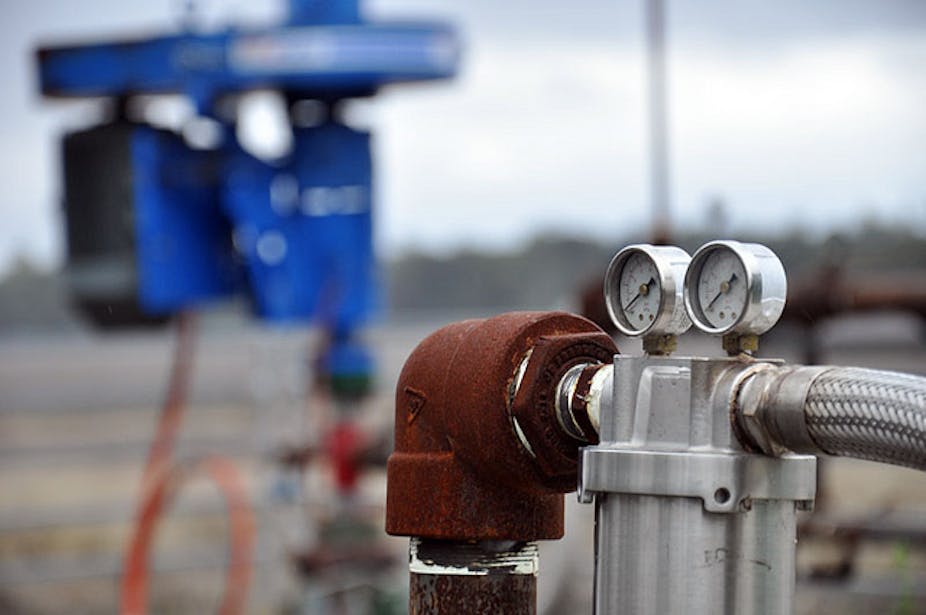Last night’s ABC Four Corners program, Gas Leak!, highlighted worrying flaws in the approval and monitoring processes for coal seam gas (CSG) developments of state governments in Queensland and New South Wales. “Bankable” outcomes appear to take priority over environmental outcomes where cash-strapped governments receive royalties from CSG developments.
Health and community groups have consistently expressed concerns that the level of assessment and regulation of CSG activities in Australia is inadequate to ensure environmental protection and the health of present and future generations.
Despite governments allowing rapid development of the industry, there are still many information gaps. The homework has not been done to properly work out what the carbon footprint of the CSG industry really is and how much it will contribute to acceleration of climate change.
We don’t know how loss of farmers’ water will be somehow be “made good” or where all the waste water and salt will go. And we don’t know whether techniques developed on the run – such as aquifer re-injection (putting treated waste water back underground) – will create further problems, such as increasing the risk of earthquakes.
Particularly of concern for human health is the lack of information on chemicals used and wastes produced during drilling and fracking. There has been no comprehensive hazard assessment of the chemical mixtures used, their impacts on the environment or human health, and the cumulative effects of exposure. Lacking also is comprehensive environmental monitoring and health impact assessment.
Fight for protection
Enormous community backlash has led to encouraging developments in NSW, with plans to legislate improved protection from CSG operations.
But it’s a case of two steps forward, one step backward, with moves already in place in NSW to allow councils to exempt their areas from the new protections.
There are also ongoing concerns about exploration in drinking water catchments and impacts on communities not covered by the proposed legislative changes, such as Fullerton Cove and Gloucestor. The NSW Government has chosen not to implement the recommendation of its own inquiry into CSG to ban fracking until the chemicals used have been assessed for their intended use and toxicity.
Health risks
While the ABC program highlighted concerns about leaking methane in the QGC gas fields in Tara Queensland, little mention was made of the health concerns of residents living there, which are the subject of a recently released Queensland health department report.
Forty-six people have reported symptoms, predominantly headaches, eye irritation, nosebleeds and skin rashes. Despite CSG activity there since 2006 and health complaints dating from 2008, there was no investigation until late 2012. The investigation was unable to determine whether health effects reported by the community were linked to exposure to CSG activities. There are a number of reasons for this, including the non-specific nature of the symptoms and the difficulty of accessing health care providers.
However a major flaw in the investigation was the lack of comprehensive and appropriate independent environmental monitoring. Only now has there been a government recommendation that:
a strategic ambient air monitoring program be established … to monitor overall CSG emissions and the exposure of local communities to those emissions.
CSG developments are being rushed through before systems are in place to protect local communities. Not only must environmental assessments for unconventional gas projects be transparent, independent and comprehensive, but they should include health impact assessment.
Tough approval conditions also mean little, unless they are followed up with adequate enforcement, and comprehensive baseline and ongoing environmental assessments. These processes must be in place before any CSG activity commences.

